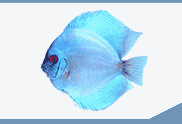

 |
||||||||||||
 |
||||||||||||
| Fungal Diseases of Fish | ||||||
| Ruth Ellen Klinger and Ruth Francis-Floyd | ||||||
Fungi are a group of organisms called heterotrophs that require living or dead matter for growth and reproduction. Unlike plants, they are incapable of manufacturing their own nutrients by photosynthesis. Fungi are present everywhere--in saltwater or fresh water, in cool or warm temperatures. In most cases, fungi serve a valuable ecological function by processing dead organic debris. However, fungi can become a problem if fish are stressed by disease, by poor environmental conditions, receive poor nutrition, or are injured. If these factors weaken the fish or damage its tissue, fungus can infest the fish. Fungi can also prevent successful hatching when it invades fish eggs. Fungi are grouped by the morphology of various life stages. All fungi produce spores--and it is these spores which readily spread disease. The fungal spore is like a seed which is resistant to heat, drying, disinfectants and the natural defense systems of fish. The three most common fungal diseases are discussed here. They are known as Saprolegniasis, Branchiomycosis, and Ichthyophonus disease. SAPROLEGNIASIS Saprolegniasis is a fungal disease of fish and fish eggs most commonly caused by the Saprolegnia species called "water molds." They are common in fresh or brackish water. Saprolegnia can grow at temperatures ranging from 32° to 95°F but seem to prefer temperatures of 59° to 86°F. The disease will attack an existing injury on the fish and can spread to healthy tissue. Poor water quality (for example, water with low circulation, low dissolved oxygen, or high ammonia) and high organic loads, including the presence of dead eggs, are often associated with Saprolegnia infections. The presence of Columnaris bacteria or external parasites are also common with Saprolegniasis. Disease Signs Saprolegniasis is often first noticed by observing fluffy tufts of cotton-like material--colored white to shades of gray and brown--on skin, fins, gills, or eyes of fish or on fish eggs. These areas are scraped and mounted on a microscope slide for proper diagnosis. Under a microscope, Saprolegnia appears like branching trees called hyphae. Management and Control Saprolegniasis is best prevented by good management practices--such as good water quality and circulation, avoidance of crowding to minimize injury (especially during spawning), and good nutrition. Once Saprolegnia is identified in an aquatic system, sanitation should be evaluated and corrected. If mortality is in progress, medication is appropriate. Common treatments include potassium permanganate, formalin, and povidone iodine solutions. Overtreatment can further damage fish tissue, resulting in recurring infections. Environmental management is essential for satisfactory resolution of chronic problems. more ... |
 |
|||||
| About Us :: Message Board :: Chat | |||||
| Library :: Photo Gallery :: Links & Resources :: Breeders & Sponsors :: Merchandise | |||||
| Website designed by: EthanCote.com | © 2001-2004, SimplyDiscus.com. All Rights Reserved. | ||||